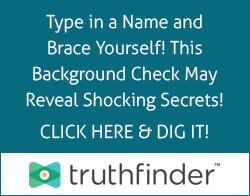Hunting The Hunters Part II: Digging Into Foundations
You have a hunch that something feels very off about an organization, foundation or individual, but you are not sure how to begin digging. You know that something just doesn’t feel quite right, but where do you start? How do you make those connections, and what resources do you use to find the connections? How do you organize it all and make sense of it all? Part II of ‘Hunting The Hunters’ offers a basic guideline on how to begin digging and organizing your finds. This will be based on hunting a foundation being as that is quite a theme these days, since so many have turned out to be frauds and fronts. Keep in mind, this may not always be the exact order or method to how you might dig into a foundation, but it offers a general guideline to reference. Also note that when hunting organizations or individuals, some of these methods will obviously change.
Please read ‘Hunting The Hunters’ Part I first, which covers hunting “Nests” versus “Webs”.
Digging into a Foundation
Before you begin digging, it is crucial to use a virtual private network (VPN) for security, to protect your identity, and prevent scraping of your private information. In fact, you should be using VPN on all mobile, TV, and computer devices for the entire family, especially when doing online banking, shopping online, or surfing from public wifi locations. I recommend NordVPN or ExpressVPN. They are quick to download and super easy to use. I don’t recommend “spying” without using a good VPN.
1) First, go to their website and learn what you can about their “cause”. Review their board members, if they list a “donors” page, and any press releases to see what they are up to.
2) If this quick review raised an eyebrow, go straight to their 990s. Type their name in the search bar (don’t limit it to a state because they may be in multiple states) and click on the foundation. Open up the pdf from the most recent year and look at the money flow, grants, donors, board members, trustee, address, etc. Once you have a handle on that, glance at the other years as well, as board members and finances may have changed.
3) If you see issues, create a folder on your computer and name it the name of the foundation. Download the 990s (all available) into that folder. Start a Word document so you can begin copying and pasting links into it as you go. I find it easiest to type a few words plus the date above the link I paste so I can keep things in chronological order. It’s also very important to archive every key article or web page you find is significant, just in case it’s scrubbed. Some things you may want to screenshot. I find Lightshot to be a quick and free tool for this, and it works with both Mac and PC.
4) What issues might you see? Maybe a huge amount of cash flow that doesn’t align with said cause. Maybe the people on the board are known corrupts or have been indicted. Maybe it’s the locations they are wiring money to?
5) Now you could go into LittleSis and do a search to see what info comes up and what maps others have already generated. Personally, I prefer to dig myself, rather than spend time checking someone else’s work. Primarily because I already know most of the players and their motives, so I know exactly what I want to search as I’m digging my way through. That said, LittleSis could be handy for beginners who are not familiar with a lot of the players, but always check other people’s work. OpenCorporates can also be handy to show you a quick glance as to how many states their foundation is registered in, along with other tidbits of info. Be very careful not to assume that a foundation including the same last name is automatically a foundation of theirs as well. Oftentimes this is not the case, so it’s critical to review the 990s to verify that, or lookup their registration information. I also like to run background checks on all people involved, as this can bring up all kinds of helpful insights on locations, criminal backgrounds, additional connections, etc.
6) The first thing I want to know about a foundation is, who all is working with this foundation and who is donating money to them. They tend to donate in circles. For example, several may work together to raise money and get funding from governments. The funds may go into one foundation, then that foundation donates to the other foundations. So linking those webs together is key. This can be done with a simple search of googling the foundation name with either an individual from another foundation, or the actual name of the other foundation. You are sure to find press releases and most likely articles from The New York Times, Washington Post, Bloomberg, and Business Insider. Here are some shortcuts to narrow your google searches. TIP: If you are searching a certain time period, be sure to use google > tools > any time > either select a timeframe, or enter a custom one. This will weed out a lot of unnecessary sites coming up.
7) If you aren’t terribly familiar with the owners of the foundations and/or their board members, do a quick scan through Wikipedia on their history. I wouldn’t claim it to be a 100% accurate, but it gives you a general basis to work from, and perhaps a direction to go in, as they always cite articles. It also links you to family members and their history which can offer additional insight. Always verify information you find on Wikipedia since it is edited by the general public. You can also click on the “view history” tab at the top to see when edits were made and who they were made by.
8) Look at that address on the tax returns, as well as the address on their website. Are they the same? Oftentimes they are not, so be sure to check both addresses. Run the address by itself in google, do other businesses come up to that address? What about the locations they claim to be doing work in. Do those addresses exist? It’s always important to run all locations for legitimacy. This is where a map comes in handy. Go into google earth or google maps and aerial view all locations. What do you see? Anything strange? Are there questionable businesses located next door, or is the building itself nonexistent? Believe it or not, these kinds of things happen often with foundations.
9) Review all of their social media accounts, because they all have them. Who else are they promoting and who’s promoting them by “sharing” or “retweeting”. That will give you quick connections. Do a search in twitter for their foundation name or specific “initiative”. Who all is hyping them up? Run their foundation name in LinkedIn and it will pull up a plethora of past and present staff. TIP: When doing this sort of research it is important to protect yourself by utilizing mock accounts you have created, rather than your own.
10) Let’s say you have connected a handful of nearby organizations that work with this foundation. It appears to be a local community working together. Could it be a “Nest”? Don’t jump to conclusions. You are still in the digging phase. In google maps you can click on the plus below the address you entered, and enter another, and then another, until you have created a map that shows all of the foundations and organizations working together. Study the map, see what you notice.
11) Now let’s say you have become very skeptical about one of the other foundations in connection with it. Go back to step one and repeat everything with that other foundation. Be sure to run the 990s on that one as well.
12) You are now convinced they are up to no good, but you can’t quite put your finger on it. Create a timeline. When did they register their foundation? New York and California are always key locations for registering businesses, but of course the District of Columbia is among the most popular. What “initiatives” have they created over the years? Where were the grants coming from and when were they received? What dates did they supposedly carry out their “initiative” (they all really like that word)? Go into the Presidential National Archives and do a search for any Bills, Acts, or Executive Orders that were passed that may have assisted them in their “initiative”. The timeline may just be the break you were waiting for.
13) Once you’ve studied the players, gathered links to articles, built a timeline, and analyzed the map, now go back to the money. Does their website claim the amount of money they’ve raised and/or spent on their “initiative”? Did they report all of this on their tax returns? You don’t have to be a pro with tax returns to see discrepancies.
14) Connect the dots. What’s amiss? Look for inconsistencies. If their particular “initiative” makes staggering claims of saving lives (which they always do), do a little digging into statistics and see if it aligns. Though, this can become a bit tricky being as a lot of the sources for statistics were unfortunately under the control of these corrupt people, when it pertains to the large-scale foundations. You will likely have better luck with the smaller ones. If they do claim to save lives, that’s the first tip-off to do some digging into how many lives they may have effected negatively as well. Be sure to research both sides of the coin ALWAYS. What if they made other claims? Could they have achieved those claims in the amount of time they stated? Is it realistic?
15) Depending on exactly what type of foundation you are looking into, there are numerous other resources you can utilize for digging.
This is a good start to beginning a dig. Depending on whether you are digging into a foundation, organization or individual, obviously search methods will vary, and what you are hunting for will vary. Everyone will develop their own method for how they research. I rarely take the exact same path on my digs, but the above offers a good approach to get you going. My sixth sense tells me where to dig, while my mind processes the data simultaneously, and as I see the dots connect, I’m often 10 steps ahead of the physical dig itself. Always listen to your gut and let it be your guide.
All of this can be done through open source research. I do not have access to any paid databases, though if I did, it would significantly speed up my process. As you continue to move through individual research projects, you will start to see how each web connects to another. All of this is great exercise for the brain and your memory bank. Remember, always archive articles, download 990s, screenshot what you can, and save everything in multiple locations ie; computer, flash drives that you keep in different locations (one miles away), backup drive, etc.
Happy Hunting!
Download this full 2-part report in PDF format from the Bookshop. >


Please consider becoming a Patron or making a donation to support ongoing work of evidence-based reports to reveal truth and expose corruption.










